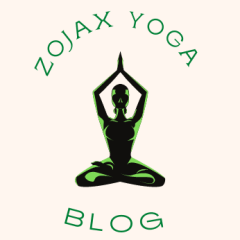What are yin yoga benefits?
Yin yoga uses calming, gentle poses to reduce stress, improve breath awareness, and cultivate mindfulness. Yin yoga is a gentle and revitalizing style of yoga created under the influence of Taoist philosophy, Buddhist meditation practices (vipasana, jhane…) and classical hatha yoga, to develop a person’s awareness of his body in a deeper and more sensitive way.

Fitness yoga photo created by freepik – www.freepik.com
A yin yoga session consists of holding a specific poses (asana) for five minutes or longer.
So, when you get into a given pose, you stay in it for a certain amount of time, and your focus is on breathing.
The inhalation is four (you count to four when inhaling and four again when exhaling), and the inhale and exhale are both done through the nose.
Poses are mainly focused on activating the lower parts of the body – hips, pelvis, inner thighs and lower spine.
Yin yoga benefits are activate connective and deep tissues in a powerful way.
Yin yoga practice improves circulation and joint flexibility, stimulates energy flow and organ health, boosts immunity, and stabilizes emotional state.
Because of the longer holding of the pose, yin yoga is a meditative practice that creates inner silence and patience.
“The name Yin yoga comes from the Taoist tradition.
The term yang relates to movement, which is usually repetitive and produces heat in the body.
The yin movement is about finding the body’s calmness and cooling.
Both yang and yin are required to create balance and sustain ideal body condition and fitness, according to the theory “.

Yin yoga benefits:
1. Activates and relaxes connective tissues
Yin yoga primarily activates and relaxes the body’s connective tissues (also known as yin tissues).
“We exercise these tissues such that the person doing the exercise stays in particular positions for an extended period of time, allowing the body’s muscular activity to rest.”
In yin yoga, there is no precise ideal of what an asana should look like, therefore the positions themselves are not as physically challenging.
We develop mental activity while doing yin yoga by doing particular portions of vipasana (meditation technique).
Every hour of yin yoga begins with a short meditation and release of tension-physical, mental, and emotional,” and emphasizes that regular yin yoga practice, as well as specific “yang” activities (more dynamic yoga forms, cardio workouts, running, and so on), bring the body and mind into balance.
2. Great for professional athletes
Yin yoga is suggested for all practitioners, regardless of their level of physical activity, and for persons of all ages.
Because today’s training is primarily focused on strengthening and exercising muscle tissue, it is highly suggested for elite and professional athletes who are frequently damaged by ‘yin’ tissues (tendons, ligaments, joints, knees, hips), and explains that there is no rule.
How often should yin yoga be practiced: “A variety of criteria should be considered, such as the practitioner’s age, condition of health, and present method of exercise.”
If you practice yoga or some other ‘yang’ styles regularly (martial arts, running, cycling), it is recommended to practice yin yoga two to three times a week, both for the balance of muscle tissue with connective tissues and for practicing focus using vipasane techniques. Yin yoga can be done every day. I do yoga asanas in the yin way. Exercises such as butterflies, semi-butterflies, caterpillars, deer, and swans are especially recommended because they help relax the body, prevent joint fixation, strengthen connective tissues, and improve general health. ”
3.The origin of yin yoga
This style of yoga, originally called Taoist yoga, was introduced in the West by Paulie Zink, who adopted it from a Chinese martial arts teacher named Cho Chat Ling. Years later, Paul Grilley, a student of Paulie Zink, combined the anatomy of the human body, classical yoga asanas, and Taoist philosophy into a unique yin yoga practice and popularized it around the world. The very name of yin yoga was given by the world-famous yoga teacher Sarah Powers, after practicing with Paul Grilley and discovering the many benefits of this relaxed, yet at the same time, very direct and challenging way of exercising.
Youtube video for beginner:



